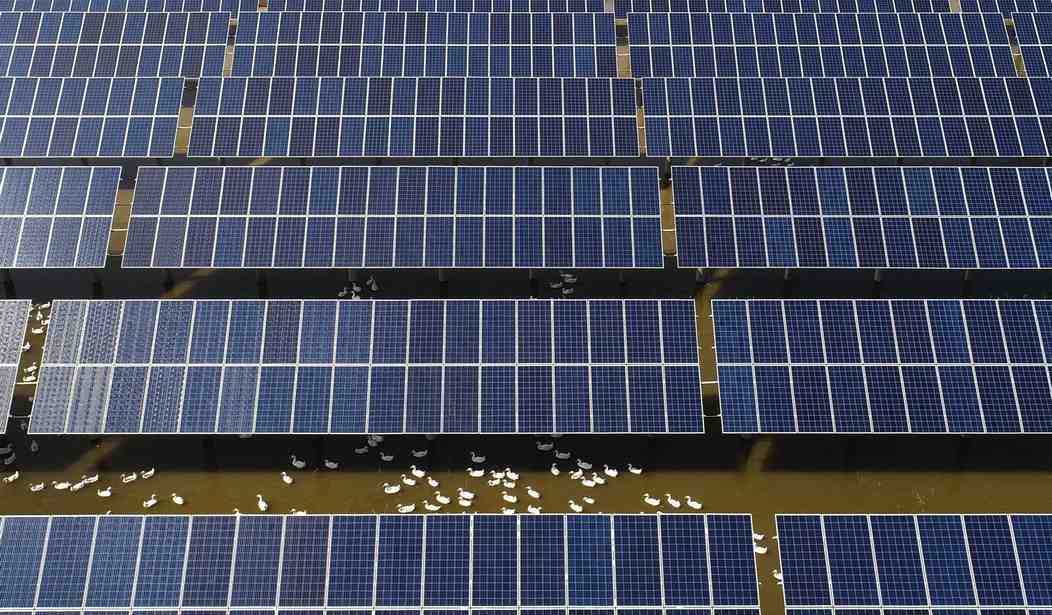Yesterday, the guys over at Powerline blog had this interesting little story on the practical realities as to why “renewable” energy sources like wind and solar power will NEVER generate the power needed to supply the vast electrical demands of the United States, notwithstanding all the proclamations and pledges made by moronic politicians chasing after “green votes”.
The bottom-line issue comes down to a simple calculation of the area of landmass needed to produce a specific measure of generated electricity when you employ different methods of generating that electricity.
When efficiency is measured as a function of landmass use, the form of electrical generation that is far and away the best method is nuclear power. The chart found in the Powerline story shows that when “power density” is measured as watts per square meter of land used, nuclear power produces 2000 watts, while solar power produces 10 watts of electricity per square meter of land used, and wind power produces 1 watt of electricity per square meter.
Part of the variable here is that nuclear power runs at a constant generating capacity 24/7/365, and besides nuclear fuel, the only natural resource needed is a supply of water.
The wind and sun are both beyond the ability of Green New Dealers to influence in terms of when they blow or shine — although they keep trying.
Once the math is done with regard to the relationship of the various forms of power which can be used to generate electricity, the next relatively simple mathematical calculation is to determine how much landmass will be required to generate enough electricity from wind and/or solar power to meet the electricity needs of the United States over a given period of time. That is where the problems begin.
Setting aside for the moment the question of capital costs and what that might mean for electricity rates to be paid by consumers, if the calculation is limited solely to a determination of how many square miles of wind farms would be needed to power the electrical needs of the United States such that the burning of fossil fuels to turn water into steam that drives steam turbine generators, the answer is a landmass the size of California — times 2. You take something akin to California, Oregon, Idaho, Nevada, and Arizona, cover it from top-to-bottom and side-to-side with giant wind turbines, and the rest of the country can run their air conditioners, microwave ovens, and electric power-washers without introducing another molecule of carbon dioxide into the atmosphere from putting a match to fossil fuel.
Solar power is more efficient than wind — except maybe in those areas where the sun decides to hide behind the clouds for days/weeks at a time in the winter months — so the landmass required by solar energy would be somewhat smaller than the wind farms. But whereas each individual wind turbine has a smaller footprint on the soil, and it might be possible to do things like farm around them, solar panels are pretty much the equivalent of pouring cement inside the swimming pool in your backyard — don’t expect to be able to still dive in once you’ve done it.
This massive need for available ground leads to some pretty obvious conclusions about where such energy farms would need to be created — and it’s not in Manhattan or along the shoreline of the San Francisco Bay. Red State flyover country is where the available landmass exists. When local and state agencies resist, or the residents of the areas proposed for such massive developments protest in the same NIMBY fashion as the residents of Nantucket or Martha’s Vineyard, does the federal government move in and buy up the land necessary — or just impose such facilities on those residents and communities by legislative fiat?
This is all part of the ambitions of the “Green New Deal.” The “Paris Climate Accords” are a pledge to reduce emissions into the atmosphere from the burning of fossil fuels. To accomplish the goals staked out in these policy prescriptions means devoting massive amounts of a scarce natural resource — land — to the re-invention of electrical generation capacity in the United States. I consider land as a “scare natural resource,” because the last time I checked, there isn’t any more of it being created. We “consume” the land when we cover it with solar panels and can’t make any other use of it.
Right now, the major metropolitan communities on the coasts are not served by electrical transmission lines from Kansas, Iowa, Nebraska, Missouri, and Oklahoma. All of that infrastructure would need to be built, as well.
Replacing fossil fuels with renewable energy sources is a geographic impossibility based on current technology. Replacing fossil fuels with nuclear power could likely be accomplished with currently available technology.
France has done it. France reduced its fossil fuel consumption for energy from 96% in 1966 to under 45% in 2018. In the same time period, it increased nuclear-generated energy to 49%, a program which began in the early 1970s as a result of the “1973 Oil Crisis” and the recognition by France that it produces no oil and has no oil reserves among its natural resources.
Currently, over 70% of France’s electricity is produced by nuclear power. France has 56 nuclear power reactors used to generate electricity, with the French Government owning 85% of the utility that operates the facilities and runs the grid.
If the Green New Dealers got out of their own way with their ridiculous objections to the expanded use of nuclear power — Three Mile Island was over 40 years ago — there might actually be a workable path to a meaningful reduction in the use of fossil fuels to generate electricity.
But that goal can never be accomplished with “clean energy” renewables favored by fantastical dreamers like John Kerry and AOC.














Join the conversation as a VIP Member